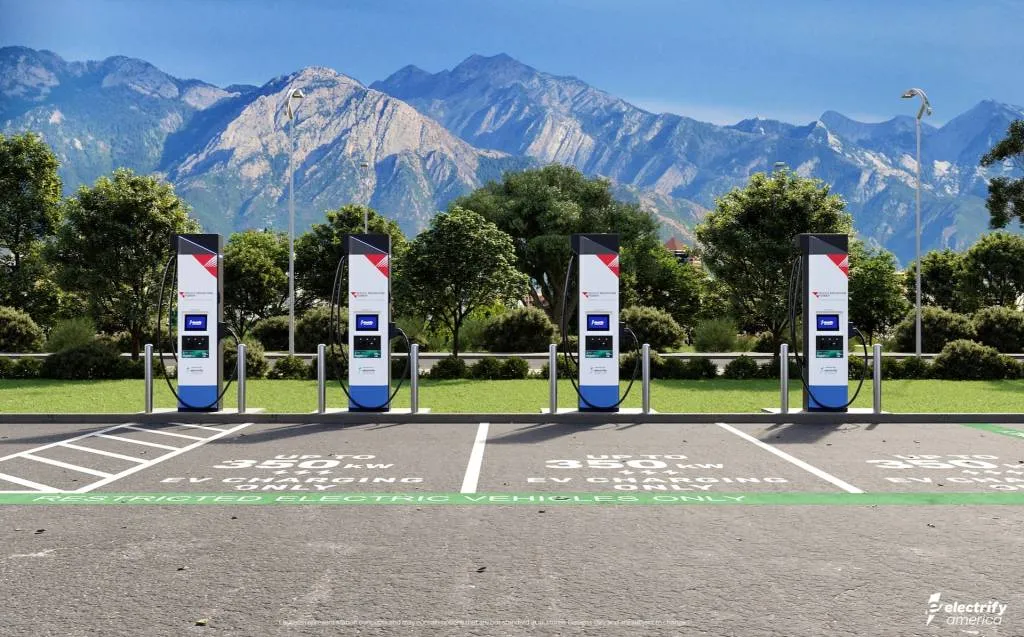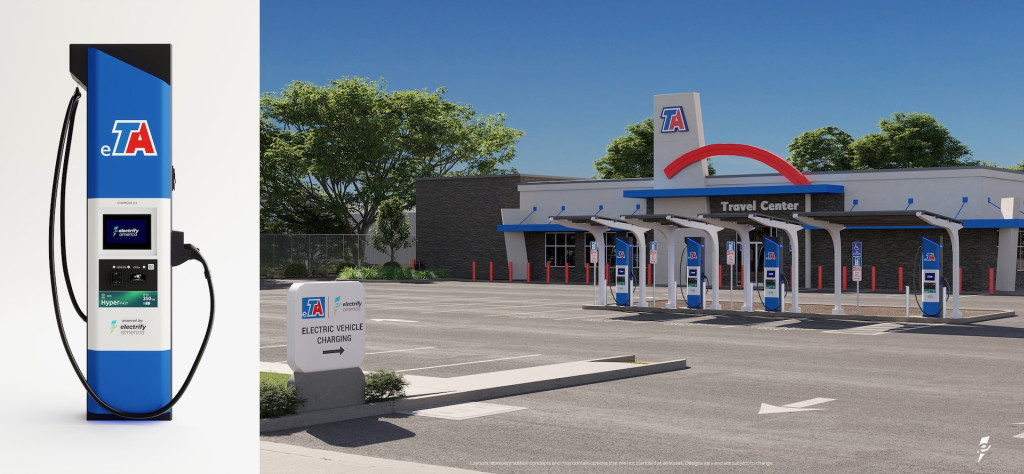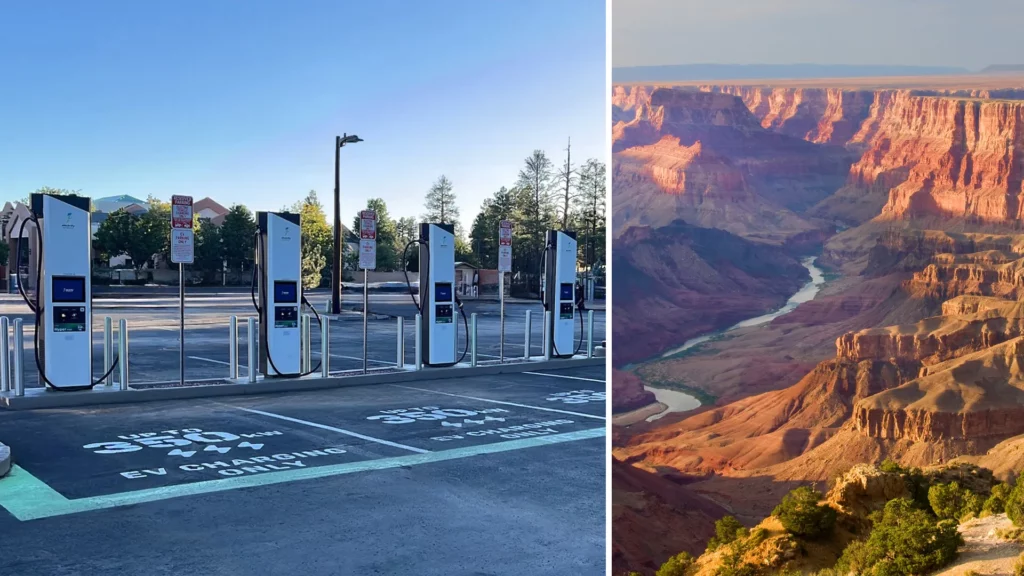Electrify America on Wednesday announced the opening of a DC fast-charging station near the Grand Canyon, putting its natural splendor within reach of more EV drivers.
Located at the Grand Canyon Visitor Center at the south entrance of Grand Canyon National Park in Tusayan, Arizona, the charging station includes six individual chargers with power rates up to 350 kw—the maximum currently offered on the Electrify American network.
A trip to the Grand Canyon was previously challenging for many EVs. The South Rim is about 160 miles from Flagstaff, Arizona, the nearest large city, and there are few places to stop in between.

Electrify America EV chargers for utility Rocky Mountain Power
Electrify America announced earlier this year that it plans to add some North American Charging Standard (NACS) Tesla connectors, but none appear to be available at this location yet. The closest Tesla Supercharger is in Flagstaff.
Funded by the Volkswagen Group as part of that automaker’s diesel-emissions cheating settlement, Electrify America’s most significant competitor other than the Tesla Supercharger network is likely to be the network starting to take form with seven automakers jointly invested. BMW Group, General Motors, Honda, Hyundai, Kia, Mercedes-Benz, and Stellantis together aim to install at least 30,000 high-powered charge points at urban and highway locations.

Electrify America to install EV fast chargers at TravelCenters of America locations
All of these efforts have generally been less focused on parks and other outdoor destinations. As recently as a decade ago, national parks like Yosemite which were even then becoming frequented by EVs didn’t have a clear plan for charging. Rivian has also been working on its own charging network, but it’s mostly Level 2 charging oriented toward those who want to charge up while out for hours doing an activity.
National parks thus present an open avenue for expansion for Electrify America, which for a time was focusing efforts around Walmart stores, but the retailer last year announced plans to go its own way on charging. Many of these new chargers may soon need to meet stricter reliability standards as part of the federal government’s $7.5 billion charging infrastructure investment.

